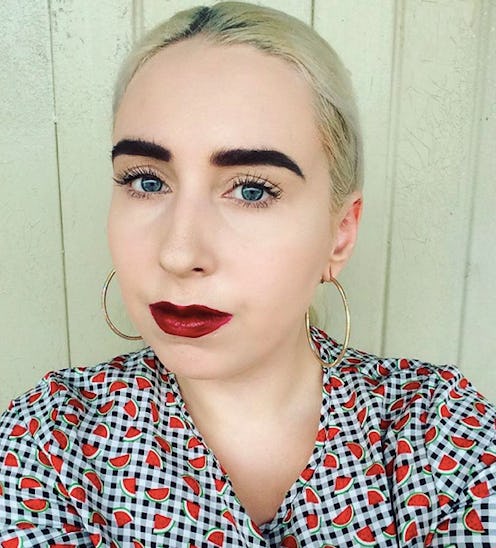Fashion
Beauty Ideals Are Flawed, And Here's Your Proof

It's not a secret that society's ideal body type for women has changed often and drastically over time. BuzzFeed's "Ideal Body Types Throughout History" video timeline even takes us from 1096 BC right up to the modern day. While it's fascinating and fun to watch, there are a lot more points of interest than the chronicling of the changes themselves. For one, there are the reasons as to why these changes in beauty standards took place. Often, a shift seems to be a direct reaction to the standard that came before it.
The transition from the androgynous flapper look in the roaring '20s to the "golden" age of Hollywood in the '30s, for instance, saw a '50s that championed Marilyn Monroe curves after decades of a svelte and boyish silhouette being coveted. From the "heroin chic" look of the '90s to the Victoria's Secret ideal of the early 2000s, shifts in desired body shapes are never-ending.
As you watch BuzzFeed's timelapse video or read any of the many articles out there on the evolution of beauty standards, the contrasts between each era and decade (although still predominantly consisting of attractive, moderately thin, white, cis women) are more common than the similarities. There's almost an ebb and flow feel to the changing tide of trends, from curve-less to curvy and back again.
Growing up in the late '90s / early '00s, the fashion trend I noticed of waifish figures only brushed the surface of what preteens and young teenagers expected of each other. Realistically, all anyone really cared about was breasts. Whether debating Rachel's constant nip-on in Friends or drooling over figures like Pamela Anderson or Anna Nicole Smith, full ta-tas were definitely part of the ideal beauty standard (despite how the history books show the '90s beauty standard as focusing on the fashion-forward Kate Moss look).
Honestly, though, I never even thought about asses or hips, or the width (or non-width) of either, until the last few years. Of course, there was always the occasional fashion program on TV that discussed pear shapes alongside whatever-stupid-food-vaguely-resembles-your-body shapes, but there was no mainstream social or media focus on butts and what to do with them. This is arguably because, until really recently (more recently than most would like to admit), the ideal beauty standard for women has only ever focused on white women.
Having been a teenager and 20-something in the past five years, I often wish that I could've done the whole growing up thing during the Pam Anderson phase of beauty standards, as opposed to the Kim K one in which we currently reside. A focus on having big breasts would be perfect for me, especially as my New Year's resolution was to flaunt my chest more. It would be even more perfect considering that regardless of how fat my frame is, my ass will always look flat in light of my top-heaviness.
It took a long time for me to come to terms with the fact that although I have curves, they don't fall in line with the current female archetype of perfection. It also took me a long time to realize that because of their ever-changing nature, beauty standards prove themselves pretty arbitrary. If the "perfect" figure can so easily change, how was it ever "perfect" in the first place? Surely perfection should be an absolute — something that is unchangeable because it has reached the best level it could ever reach.
The media and society often tell us what we should perceive as perfection, which we then perpetuate in the notions and ideals we carry. However, because the image of the ideal is overused and overthought, we seemingly become bored. This all means that the ideal has to change in order to keep everyone interested (and, of course, to keep businesses in business). Perhaps this is why the fashion and beauty industries so often feel born out of our insecurities — insecurities then used to market products and fashions. I never cared or considered my ass until 2012 when it became "a thing," but now it's one of my biggest self-image issues. As Dr. Gail Dines famously said, "If tomorrow women woke up and decided they really liked their bodies, just think how many industries would go out of business."
Last year, I discovered that my insecurities were completely made up because of the amount of times they could change in one week. I thought for ages and ages that the issue with my face was that my lips were too small, until a friend told me that she was jealous of my pouty mouth. My insecurities suddenly switched, and I became obsessed with the idea that my eyes were too close together (until I asked another friend and they quickly dispelled my qualms).
It's almost as though we're taught that we have to have insecurities, so we make up personal flaws to become depressed over. Beauty standards that are made up and changed every few years only help keep that self-hatred fresh. Through body positivity and a much more diverse attitude towards body representations in the media, however, the ideal body type may become a concept of the past. What would feel more radical still is if the next time we are presented with a repeated image of supposed perfection, we simply will reject it.
Images: Georgina Jones